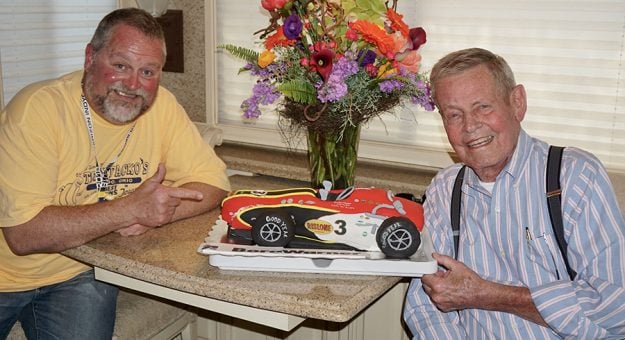IRVING, Texas — Upon reflecting on the passing of three-time Indianapolis 500 winner and 13-time Pikes Peak Int’l Hill Climb champion Bobby Unser, a line from Dr. Seuss comes to mind:
“Don’t cry because it’s over, smile because it happened.”
That sums up the life of Bobby Unser, who passed away after lengthy health issues late Sunday night. His death was announced on Monday.
Only the lucky ones in life get a chance to meet their heroes; even fewer get to call them friends.
That was my relationship with Bobby Unser.
It seems that on my journey to the Indianapolis 500, Unser was a key part of the landscape.
It was like he designed the road map.
When I was a kid growing up in the northern Indiana community of Plymouth during the early 1960s, he was already a fan favorite at Indianapolis Motor Speedway because he drove the big, loud as Hell Novi.
The Novi was fast and loud and the fans loved it, but it never won the Indy 500.
Back in the 1960s, there were only three ways to see the Indianapolis 500. One could buy a ticket and attend the race — something my father would never do. Selected movie theaters also showed the race via closed-circuit telecast.

Finally, the third option was available to the masses and that was viewing the race on ABC’s Wide World of Sports three weeks later.
As a fourth grader in 1968, I anxiously awaited the mid-June telecast. I already knew Bobby Unser had driven to victory that year, as the Turbine-powered STP creation built by Andy Granatelli conked out after the dominating the race for the second year in a row.
Before the race, Unser was interviewed by ABC and in my head, I was amazed that they knew who was going to win before the race ever began.
That was about the extent of my television production knowledge as a 9-year-old.
Every year, I tuned into the Indianapolis Motor Speedway Radio Network and listened to Sid Collins call the race. There were always key names I paid close attention to — A.J. Foyt, Mario Andretti, Bobby Unser and Lloyd Ruby. Later, drivers such as Al Unser, Gordon Johncock and Johnny Rutherford were added to the list and even later, a young kid from Southern California named Rick Mears became one of my favorites.
Bobby Unser was on the list because he was a “charger.” He drove a race car as fast as it would go. Unser was all about speed and he had a big personality to match. He was also opinionated and never afraid to speak out on a topic. He often drove the car fast in the early and middle portion of the race. Sometimes, the engine wouldn’t last.
“There were many races that I may not have finished, but I was leading the race when that happened,” Unser would often say. “Even if I didn’t win, the fans knew that Bobby Unser was the fastest driver on the track.”
I didn’t grow up in a racing family; my dad and brothers were more into stick-and-ball sports, but I was fascinated by the Indianapolis 500 and the legends that raced there. It wasn’t until 1981 when I finally made it to the Indy 500 as an Indiana University junior.
We partied all night in the long line of cars and party animals waiting for the gates to open at 5 a.m. on race day. Back then, the “Snake Pit” had moved down to the fourth turn and I made sure to get as close to the fence as possible to see the race.
Bobby Unser started on the pole and was the dominant story of the race. The only other driver in the field that could keep up and contend was Mario Andretti.
It was almost fitting that in my first Indy 500 in person, Bobby Unser was both the winner and larger story evolved from it.
Watching a race in the Indianapolis Motor Speedway infield, nobody knew of the controversy that occurred when Unser passed nine cars during a caution period leaving the pits. Andretti’s Pat Patrick Racing team filed a protest with USAC, which upheld the protest and named Andretti the winner of the race at 8 a.m. the following morning.
Unser’s team owner, Roger Penske, appealed that decision and in October 1981, Unser was reinstated as the winner.
It was his final Indianapolis 500 as a driver.
Click below to continue reading.
